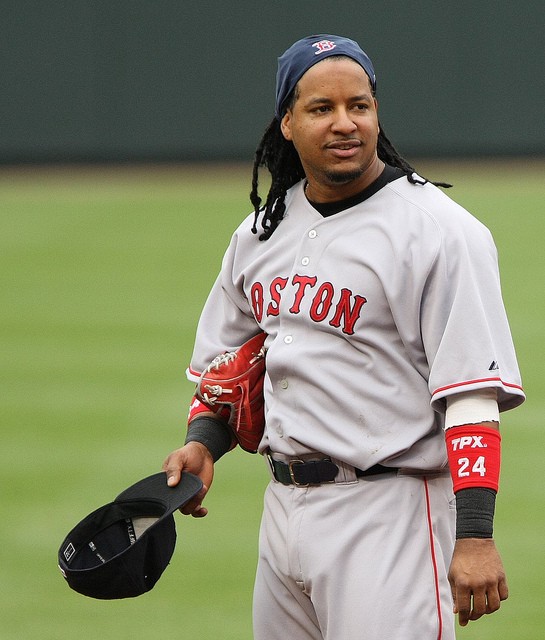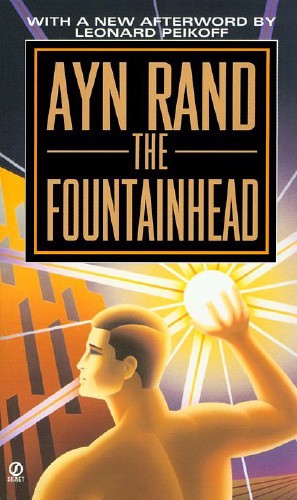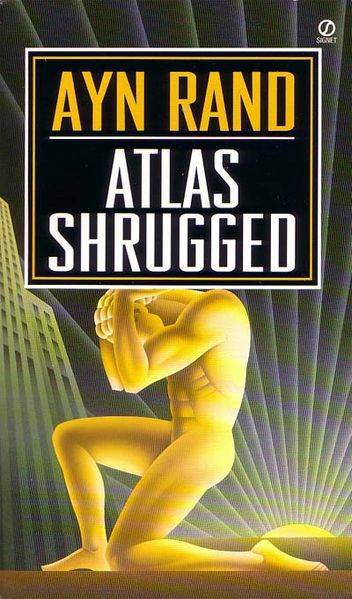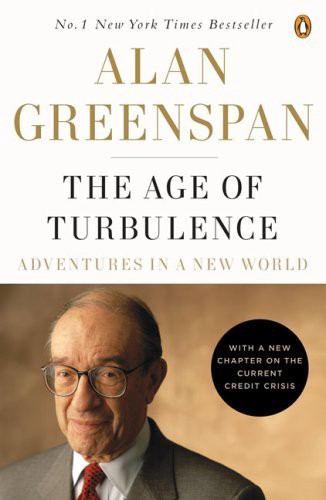Mastering Your Brain
Before I bring you the latest from Science, let me relate a brief personal anecdote. So there have been a couple of instances recently where even I, who have a much higher tolerance for the amount I drink than the rest of the people in my life seem to have for the amount I drink (go figure), have been like, wow, you have kind of been drinking a lot lately? To the point where it’s like, you know what, maybe you should drink just a little less? So after those couple of instances (actually, if I’m being honest about it — and why the hell shouldn’t I be? It’s not like you people know where I hang out well enough to intervention me or anything (BUT! I am always suspicious of invitations to small gatherings now! I have pleaded exhaustion or schedule conflict to avoid at least six events in the last three months because the still, strong voice in the back of my head that tells me what to do and is a big fan of me being drunk is all, “Those people think you’re stupid! ‘Intimate party to celebrate my book launch’ my ass! They’re gonna intervention you!” Or, “Yeah, right, ‘engagement dinner just for our oldest, dearest friends.’ They are SO planning to intervention you. (And be wary of their wedding invitation too.)” And, of course, “OH, SURE, ‘I don’t think Grandma’s going to make it much longer.’ Could they be more obvious about wanting to intervention you?” So I have missed out on a bunch of things recently but, what with the popularity of that damn A&E; show, everyone thinks they’re qualified to judge you for your hobbies these days, so you can’t be too careful. Still, I do kind of wish I had had just one last time to visit my grandma and hold her hand and hear her sing me that song she sang to me since I was a baby. I mean, I’m not saying there are no regrets.). Anyway, the point is, the part before where I said “a couple of instances recently” is a little more like “every day since a few weeks before the Super Bowl up to now”) I have risen the next morning firm in my resolve to consume a smaller quantity of alcohol for just that one day, only to find that no matter what I do (for example, drinking 80 proof instead of 101, or refusing to take a sip until the evening news — the local edition, I’m not some kind of ascetic or something — comes on, or putting a cube of ice in the glass to dilute it) it is still suddenly 3 in the morning and I’m half on the couch and shirtless with an empty bottle in my hand, a deep and shame-inducing ache in my head, and an old Steve McQueen movie on the TV. (It is always Steve McQueen, for some reason. Usually it’s Thomas Crown, but not all the time. The other night — okay, last night — it was Soldier in the Rain. Also, I don’t own any Steve McQueen movies. But I apparently I subscribe to the Steve McQueen channel as part of my cable package. It’s weird.) Once I had actually stabbed myself in the right arm with a vegetable peeler. At least I assume I stabbed myself; there was nobody else around. Plus, it was my own vegetable peeler; it was part of the huge collection of utensils that my grandma had collected over a lifetime and since I associated so much of my time with her as being spent in the kitchen, it (the collection, not just the peeler) was the first thing I asked for when she passed. (I didn’t get much of an argument. Not everyone was as attached to her as I was. Probably because she was the only one who thought I was special.) They don’t make things that last like the way the did in her day. That peeler was forty years old and it still took such a chunk out of my arm that the wound remains concave four weeks later. Anyway, I have started to feel a little bad about all of this, because, really, how hard can it be to not get so plastered that the awful feelings of self-recrimination are actually a pleasant distraction from the hangover? Well, good news: According to Science, you can teach yourself tricks and strategies that help you better exert self-control. So once I figure out how to do that I think everything’s gonna be a-ok for me. Maybe I’ll start working on it next month or something.
Computers Get All Weirded Out When They Hear More Than One Person Talking At A Time
“You are at a party, and Alex is telling a boring story. You are much more interested in the gossip that Sam is recounting to Pat, so you tune out Alex and focus on Sam’s words. Congratulations: you have just demonstrated the human ability to solve the ‘cocktail party problem’ — to pick out one thread of speech from the babble of two or more people. Computers so far lack that power.”
— So being a computer is kind of listening to Lou Reed’s “Kicks” all the time. (Which wouldn’t actually be so bad. I love the way the “cocktail party problem” enhances the great paranoid creepiness of that song.) Seems like Lou was maybe onto this when he chose the set design for his 1976 Rock n’ Roll Heart tour.
Playing Sega Genesis With Manny Ramirez
by David Roth and David Raposa

David Roth: David Raposa, I think you pissed off Tony La Russa. He gets asked these sad I-am-really-on-deadline-right-now questions every day as part of his job. Shouldn’t he know how to answer these questions a little less… ulcerously?
David Raposa: Well, David Roth, I have to say that is some weaksauce ranting. He didn’t even mention Kurt Bevacqua. Granted, beat reporters are stuck asking that sort of “well duh” nonsense in order to file copy. But he’s just trying to rally the troops. Even the ones he can’t remember by name. “You think those Mendoza Lining clowns I field every day to hit behind the pitcher can’t drive in runs?”
David Roth: Admittedly, it’s striking how natural LaRussa’s hair color is now, though. I think he rocks Mubarak For Men for that sexagenarian-with-inky-mane look. Clyde Frazier all in the commercials like, “Pwned and dethroned!”
David Raposa: The next time the lady at Supercuts asks if I want something special done to my hair, I should just show her a pic of TLR. “But with extra zazz.”
David Roth: LaRussa’s got a “Suite Life of Zach and Cody” haircut, but I’m sure you could make it grown-man-and-fly, though. I obviously don’t like him, but to me what LaRussa has on other pantheon managers is that he’s the only one whose car keys Buzz Bissinger has tried to take after a scotch-y night at a Macaroni Grill in suburban Houston.
David Raposa: He also got fired by Hawk Harrelson. He got gone, I mean to say. Can of corn.
David Roth: PUT IT ON THE WHATEVER YES. Wait, Harrelson was the GM of the White Sox?
David Raposa: Oh, yeah — he had a banner year. “Harrelson also traded rookie Bobby Bonilla, later a six-time All-Star, to the Pittsburgh Pirates for pitcher Jose DeLeon.”
David Roth: Too early to tell how that will work out. But yeah, I guess the point is that LaRussa should keep his Under Armour 4 Coaches wicking long-sleeve mock turtle on, because no one knows what is happening yet and no one is actually criticizing David Freese. Yet.
David Raposa: I think some Baseball Prospectus writer once suggested that no one should draw any conclusions about the way a season looks until at least the second or third week of the season. As a Red Sox fan and Rays bandwagoneer, I’d definitely appreciate any and all dopes adhering to that edict.
David Roth: Yeah, I was going to say.
David Raposa: Though, on the Rays tip, I did appreciate hearing for the 384,782th time that they’re not going to be good because they couldn’t afford to overpay Carl Crawford. cf. this blort by the wholly impartial Peter Golenbock.
David Roth: Isn’t Peter Golenbock the guy that wrote the never-released Mickey Mantle novel that had tons of threesome scenes?
David Raposa: I was going to ask you that! If any guy deserves the Zalman King treatment, it’s the Mick.
David Roth: Mad saxophones. (Also: that was Golenbock)
David Raposa: Tasteful yet erotic soft lighting.
David Roth: A gratuitously shirtless Phil Rizzuto.
David Raposa: Ken Singleton giggling behind a Japanese screen.
David Roth: I like the idea of Michael Kay in the David Duchovny narrator role. Am I allowed to admit to knowing that The Duch was in Red Shoe Diaries? Am I allowed to admit that because of Red Shoe Diaries, I spent a lot of my life thinking that sex only happened when people were surrounded by candles and gauzy drapes?
David Raposa: I thought sex was something that happened between two indistinct rainbow-colored blobs.
David Raposa: Anyway, my favorite part of Golenbock’s side-swipe is this: “Damon already is complaining about the turf, Manny sat because he was upset at being booed, and Evan Longoria has a hurt leg and will be out three weeks.” That’s two bits of conjecture, one misdiagnosis (unless his oblique moved to his leg), AND a buried lede! Which is to say: take away the best hitter on your favorite team, and see what happens!
David Roth: That’s some “please don’t listen to sports talk radio anymore, Dad” shit. I wonder why guys like that feel compelled to weigh in. If you’re not really following it, why bother?
David Raposa: He’s looking for some of that sweet Murray Chass not-a-blogger money.
David Roth: I was just thinking of Chass. That guy hates everything he writes about, yet won’t stop writing about it. He should take dance lessons or start substitute teaching. Pick the bits of chili out of his beard and go antiquing. But enough with the grumpenstein fake Mickey Sabbath routine and the Truth To Power bit about Mike Piazza’s alleged steroid backne.
David Raposa: It’s like watching over-the-hill ballplayers struggle into retirement, except the ballplayer actually TRIES.
David Roth: They’re men out of time, the new world of information scares them, etc. And that’s fine! There are Tea Parties out there to help with that. But if you don’t like or get the game anymore, then maybe write or think about something else?
David Raposa: Speaking of something else, maybe we should actually talk about what’s going on this season?
David Roth: Well, the Royals are winning, the Red Sox are all hitting .096, the Rays aren’t even wearing uniforms anymore and are just running around in corduroys and trying to catch fly balls with butterfly nets. Sending Ben Zobrist up to bat in shorts, Crocs and a Big Johnson Surfboards t-shirt.
David Raposa: I actually watched their first (& before Dice-K’s “effort” Monday, only) win this year, thanks to the cancer-curing magic of MLB Extra Innings from DirecTV (sponsorship TK)
David Roth: How was it? Did Kyle Farnsworth throw any karate kicks?
David Raposa: Well, Matt Thornton was quite Farnsworthy, in that “here’s a fastball, lemme know when it lands” kind of way.
David Roth: He has apparently been terrible. He has presumably looked better being terrible than Ryan Franklin. Who has also looked terrible, but done so with that exceptionally pube-y face-mullet hanging off his chin.
David Raposa: Relievers need some of that Brian Wilson epic beardedness. Or maybe that Ben Weber epic shop-teacher gogglesness.
David Roth: BEN WEBER! The Walter Sobchak of the AL West. I loved that dude. That was back when the Angels had a bunch of relievers who could maybe have been Jewish. I was on board with that. Al Levine? I will ride for Al Levine.
David Raposa: Say what you will about small ball, Roth; at least it’s an ethos.
David Roth: Ben Weber was a toss-up. I’m pretty sure Max Weber was Jewish, but I’m pretty sure Chris Webber isn’t. It’s confusing. But Ben Weber could DEFINITELY get you a toe. To go back to the person other people actually know about, though, I’m kind of torn on Wilson.
David Raposa: Wilson’s transformation from God-loving sub-K-Rod spaz into MLB marketing beacon kinda sideswiped me.
David Roth: I like that he’s weird, in the abstract. I liked looking at that lustrous beard last year, a lot. But at the same time I am maybe tired of him making Chuck Norris jokes?
David Raposa: He’s making jokes? “Brian Wilson doesn’t cash checks; he checks cash?” That sort of shit?
David Roth: Yeah, more or less. There was an interview he did with Leno that was exactly as excruciating as you’d expect. Wilson being all “Roundhouse kicks. Beard.” And Leno being “Have you seen this current event? Have you heard about this current event? Would you believe Bieber Lohan Kardashian?”
David Raposa: So, as far as I know, baseball is selling to America: 1) Yankees, 2) Red Sox, 3) facial hair
David Raposa: When was the last time MLB actually marketed its stars well? Was that all PRE-STEROIDS, when the game was pure like Mormon children, and roly-poly pitchers threw 255 change-ups at Gary Disarcina look-alikes who flailed at such soft cheese like clay spooling out of a Play-Doh Fun Factory.
David Raposa: I may be misrepresenting that era. I know I’m doing the Rob Deers and Candy Maldonados of that era a grave disservice.
David Roth: They do themselves disservices. One of my formative baseball memories was being in the bleachers at Yankee Stadium when I was in middle school and this anthropomorphized pack of Merits/lady behind me loudly singing, “Rob Deer takes it up the ass, doo-dah doo-dah.” To the tune of Camptown Ladies, at the volume of a largish jet.
David Roth: Now those seats are like $35 and have no visual access to the field. The “bleacher seats” are now located 11 blocks from the stadium, in an Old Navy.
David Raposa: Well, I haven’t had the pleasure of being gobsmacked by New Yankee Stadium. But I like that the Yankees are currently cycling through every former Montreal Expos pitcher. It’s like the good old days, when they’d sign guys like Jaret Wright and Carl Pavano to uber-deals and then feign surprise when they pitched to their age or injury history.
David Raposa: Meanwhile, Oil Can Boyd’s all like, “What the FUCK, Cashman! I still bring the heat!”
David Roth: The Can is too real for the Yanks. We need more dudes who pitch in glasses. Not sport-glasses. I mean like Tom Henke CPA-model glasses. Strike you out, then help you fill out some paperwork on setting up an IRA.
David Raposa: Greg A. Harris!
David Roth: Harris is so compelling in Breaking Bad, though.
David Raposa: Should we talk about Manny? I feel that wonderful old-man-shoving goober deserves some sort of heartfelt semi-snarky chat sendoff. In my mind, as long as he doesn’t hire Antoine Walker to manage his finances, I’m sure he’ll be happy.
David Roth: I cannot imagine Manny spending very intelligently. But I also can’t imagine him spending that extravagantly. Like, I imagine that Andruw Jones lives in a house in which the floor is made entirely of functional iPads. Jason Giambi lives inside a giant Lamborghini and A-Rod’s place is all mirrors and marble. I just imagine Manny eating the same sandwich every day at least once, and then playing oldish video games. Guy plays Sonic The Hedgehog until all hours.
David Raposa: All he needs are some dick pills, some conditioner, and a ball and paddle. And Hot Pockets. The fact that baseball standard bearers are going to lose their shit over his Hall of Fame worthiness or legacy means exactly zip to him.
David Roth: He’s a Hall of Famer to me. I’m just going to induct someone new to the Hall in every one of these. Handsome Ron Kittle is getting in sometime in July. But Manny was transcendent, when he was transcendent. The drugs honestly don’t matter that much to me, because I think all this needs to be considered in context. There are guys who hit 500 homers in their careers who weren’t great enough to be Hall of Famers, and that’s fine, it’s not somehow a betrayal of The Founders or whatever. Voters should just be grown-ups about this, instead of being HGHercule Poirot and examining Jeff Bagwell’s baseball cards for telltale signs of jawline enlargement or whatever. And besides, Manny was so much fun when he was fun. It’s a game. I give points for that.
David Raposa: Cosigning all of the above, especially Manny’s fun factor. I don’t want to say that’s missing from “today’s” game, but it’s lacking. No offense to Brian Wilson, but his hirsute wackiness, and resulting fame, seems almost manufactured. Not quite to the level of “you should really check out Derek Jeter’s awesome new Ford-related website!” but perilously close.
David Roth: “Fords are like me in that they are high-quality and also wearing a Henley shirt and unthreatening jeans.”
David Raposa: “Now watch me dive for this slow-rolling grounder.”
David Roth co-writes the Wall Street Journal’s Daily Fix, contributes to the sports blog Can’t Stop the Bleeding and has his own little website. And he tweets!
David Raposa writes about music for Pitchfork and other places. He used to write about baseball for the blog formerly known as Yard Work. He occasionally blogs for himself, and he also tweets way too much.
Photo by Keith Allison via Flickr.
In Defense Of Offensive Art
by Mike Barthel
When I was fifteen, I prank-called a rape hotline. I called and asked if it was true that women who get raped are asking for it. This is maybe the worst thing I have ever done! But let me explain. While I was certainly the possessor of all sorts of sexist attitudes at the time (I was a 15-year-old boy, after all), I don’t think I actually believed that women who were raped were asking for it. The reason I even knew about rape hotlines in the first place was because I’d seen a number for one on a Tori Amos tape I listened to incessantly. I was a huge Tori Amos fan, in a trading-bootlegs, going-to-multiple-concerts, actively-participating-on-Usenet-groups way. When I got bored at basketball practice, I would start singing “Me and a Gun,” a song that directly contradicts the question I put to the hotline. (“Yes I wore / a slinky red thing / Does that mean / I should spread?”) So, you know: It’s possible I believed this, but it seems unlikely.
More likely? That I was pursuing the pleasure of saying something I wasn’t supposed to. I liked doing what I knew was forbidden; I liked doing it because I knew it was forbidden, because I knew why it was forbidden, and because I thought it was forbidden for a good reason. And it was that mismatch between what I knew was right and what I was doing that made it “funny.” At the time my neighbor Morgan and me were on a whole tear of prank calls. In part, we were just letting off hormonal steam, but I remember there being a real frisson to those calls too, the frisson between good morals and bad behavior, with which we were familiar from acts like Marilyn Manson, Big Black and Nirvana. What made my call unconscionable was that I let my desire to be entertained overwhelm the fact that there was a real person on the other end of the line, one who definitely wasn’t in on the joke.
But what about when the offensive act is not private but public? What if the utterance of forbidden things is a piece of art rather than just the conversation of an individual? How do we go about judging offensive art?
***
Lately, on the Internet, we’ve been arguing about a rap group that says bad things. They may not the best case for this argument, but they are the most current one. So let’s do it — let’s go Odd Future.
There are two main schools of thought regarding Odd Future’s offensive lyrics. Supporters argue, essentially, that the group does not mean the things they say, that they are talking about rape ironically or because they are teenage boys (see?) or because they want to make us aware that awful things happen. A few even claim that Odd Future isn’t rapping, they’re “rapping” — that is, playing — and so no harm, no foul. To supporters, these explanations seem self-evidently true, but they’ve failed to convince critics. Most problematically, explanations like these deny the real pleasure to be had from transgression, especially humorous transgression of the type the group practices. Odd Future fans want to talk about how meaningful this stuff is, but it seems hard to believe that the appeal of lyrics in songs like “Splatter” isn’t comedic:
Hopefully my dick don’t shrivel up, when it’s time to bust
In this rusty cunt, that won a cup in collectin’ dust
Boogyin’ with Jesus and a bunch of Nazi hoes
In the front row at a holy Justin Bieber show
Offensive talk about women is far from unusual in rap — you can point to horrorcore and Eminem as clear antecedents of Odd Future — and there are only a few small differences between, say, the Ying Yang Twins chanting “beat that pussy up” and Odd Future’s rape-talk. But it’s notable that the some of the same people bothered by Odd Future aren’t bothered by, say, Kanye “Yeezy upholstered my pussy” West — and that gets at an important difference.
But what is that difference? Critics of Odd Future have had a hard time defining it. They just know it exists. And what invariably happens in these arguments, on both sides, is that Odd Future becomes isolated from context and criticized based on possible (or actual) repercussions of the songs. Making songs about rape hurts people who have been raped — and it makes rape seem less serious in people’s minds; these are fair reasons to not like a piece of art, and this disliking is clearly a reaction that Odd Future means to elicit with its music.
Sometimes the criticism will shift from the music itself to the people who listen to it. Is it morally wrong to listen to music that could encourage violence against women and that definitely trivializes it? Some art like this we seem to be fine with, and some art we’re not. Where do we draw that line? And should we even be drawing a line at all? Because maybe the problem isn’t the line — it’s in even applying moral standards to art.
***
In 1997, Ann Powers wrote “In Defense of Nasty Art,” which challenged liberals’ failure to defend gangsta rap and industrial music from conservative assault. In the essay, Powers endorses the need for art to be violent and extreme at times, and, by comparing the Dogg Pound’s Daz to Gregg Araki, she requires us to consider how our cultural position in relationship to a piece of art affects our response and shapes how we define what is and isn’t “offensive.” Arguing against the “notion that even transgressive art must enrich and heal,” Powers points out that “fans of this material aren’t made any more comfortable by it than its enemies.”
What Powers was searching for as a critic was a way to explain an art’s appeal that doesn’t grant the assumptions of the people criticizing it. In other words, an explanation that doesn’t also assume that what matters about art is whether or not it’s good for society, rather than if it’s good art. We can’t just say that all transgressive art is good because it challenges our assumptions. That would mean that even awful art, merely by being transgressive, is “good,” and so stuff that we have every reason to condemn (Jeff Dunham, say) becomes beyond the realm of critique. She reaches this conclusion: “Not all art that claims to be transgressive is worth caring about. But you can’t tell the bullshit from the real by setting moral standards. You have to set artistic ones.”
https://www.youtube.com/watch?v=1uwOL4rB-go
Powers is cheating a little bit with her examples. All the things she identifies as good transgressive art still seem to be ones that question society in the same way liberals do. This suggests that Powers’ case for offensive art’s values-challenging qualities (one echoed by a lot of people who make an argument for the importance of difficult or unpleasant art) is just self-aggrandizement. We don’t like art that challenges our values; we like art that we think challenges other people’s values. Sure, we engage with art that expresses different values than our own (Katy Perry’s heteronormativity or Beyoncé’s reification of gender roles, say), but we almost never take those as actual challenges to what we already believe. We either find a way to excuse them away, regard them as a depiction of a view that exists rather than an argument in and of itself, or stop consuming the challenging art entirely. When we encounter art that actually challenges our liberal values, we find a way to enjoy it without actually engaging with those contradictions. We don’t really like challenging art. We like art that reinforces what we already believe in a way that makes us feel like believing these things is a heroic, rebellious act.
***
And so, once again, we’re left with a moral argument, with a case for the genre that valorizes its political value rather than its artistic or aesthetic worth. And that case is weak. Here’s how music critic Tom Ewing reacted when I brought up Powers’ piece:
[T]he appeal of a lot of what Powers calls “violator art” rests on a particular kind of fantasy of individual voices cutting through the (perceived) bullshit and replacing it with (claimed) reality, as garishly harsh as possible. It was a war on cosiness and niceness — as Powers suggests the people who got the extreme artists really riled up weren’t really the authorities but the soft, consensual, progressive left. In fact the idea of the strong individual vision, the Guy Who Doesn’t Flinch From The Truth, exposing softness, crushing weakness etc. has plenty of resonance in right-wing politics and in big business.
So the model is Unflinchingness vs… what? Well, hypocrisy, weakness, complacency but also often more general ideas of softness, dialogue, compromise… a whole bunch of qualities which our social (patriarchal) set-up codes as “female”, so it doesn’t remotely surprise me that there’s a lot of misogyny underpinning some of this art.
https://www.youtube.com/watch?v=_BG6YuFNZ0g
That charge doesn’t undercut the validity of “violator art” as a genre in and of itself. Almost all artistic genres have misogynistic underpinnings, after all, and that doesn’t necessarily get in the way of our enjoyment of or even participation in them. Sometimes it does. For example, Nitsuh Abebe argues that Odd Future’s offensive talk isn’t problematic in and of itself but because it prevents some people from enjoying it:
It’s those taunts in particular that ensure lots of people will never be able to feel entirely included here. There’s been plenty of discussion of the moral dimensions of that fact. Here’s another dimension to consider, though: Doesn’t that just kind of suck, that this group would turn out a lot of fantastic music that unnecessarily dis-includes a big chunk of listeners? That there would be these terrific tracks and vital energy you might want to share in and share with others — except that sharing in it involves leaping this pointless exclusionary hurdle that doesn’t just leave out people you care about, but actively assaults their sensibilities? Sure, this kind of teenage energy is usually exclusionary: It needles outsiders and old guards and earnest moralists, and along the way it creates an us-against-them camaraderie that animates a ton of Odd Future’s output. But this stuff isn’t just needling sensibilities; it’s throwing up a significant roadblock that divides me from people I don’t want to be divided from. Leave aside morals: It bums me out that I can love so much about a few of these tracks, but wouldn’t put them on a mixtape for a lot of people I care about. It bothers me on the same small level it bothered me when my family toured a men-only monastery in Ethiopia and had to leave my mom standing outside for 10 minutes.
I know a lot of female music fans who loved rap in the ’90s who can’t really listen to it today, and it’s no accident that the vast majority of rap nerds are dudes. The genre convention of talking about sexual prowess in aggressive, hyper-masculine terms and referring to women in almost exclusively derogatory terms has hardened to such a degree that almost every rapper now does it. And this is a problem for listeners who hear something different than what the artist is trying to say. When TI, generally a good dude, says “I’m chillin’ with my bitch today,” pro-rap partisans would argue that what he means is, “I am so good at what I do that I can take a break.” But what some listeners may actually hear is “I am a gross guy who calls women ‘bitch.’” TI probably doesn’t mean to alienate anyone — he’s about as inclusive a rapper as they come — but it still happens.
The problem with Nitsuh’s argument, though, is that Odd Future isn’t trying to be inclusive. He says that such talk “unnecessarily dis-includes a big chunk of listeners,” but it seems clear that a group whose leader says “I WANT TO SCARE THE FUCK OUT OF OLD WHITE FUCKING PEOPLE THAT LIVE IN MIDDLE FUCKING AMERICA” is not exactly trying to create a big tent.
The whole point of genre is to be exclusionary. You want to create a feeling among your listeners that they have special knowledge, that they are part of an exclusive group. Odd Future is great at making its fans feel like they get it when no one else does. You can see this same narrowing of audience in country music’s evocation of conservative values, in dance music’s logos of endless sub-genres, and in indie’s anti-pleasure ethos. Rap just happens to do it with misogyny. That’s a problem. But the reason why it’s hard to talk about that in moral terms — the reason Nitsuh had to look beyond the “moral dimension” — is that a moral argument requires us to place blame. There can be no sin without a sinner. And rap’s misogyny is not a problem with any individual pieces. It’s a problem with the genre conventions that produced that piece of art. Which is to say that we’re circling back, in artistic terms, to genre, again and again.
***
If we want to judge this stuff on an artistic basis rather than a moral basis, then we can’t try and prove that there is a socially redeeming value to offensive art. We should see “offensive art” as a genre, same as country, rap or anything else, one with its own conventions and reasons for being. With “offensive art,” the genre conventions are about being dark and talking about unpleasant things and being performatively confrontational. This doesn’t place such art outside the realm of critique — we can still have lots of problems with the ideological constructions underpinning one genre or another. Likewise, no piece of offensive art should get off the hook just because it’s using genre conventions. However, such a categorization would force us to consider each piece on its merits and, maybe most importantly, within an artistic tradition, instead of simply dismissing it because it contains offensive content.
We’re reluctant to make this move for the same reason that Odd Future supporters want to explain away the group’s offensive content (even as they celebrate it in their expressions of fandom). If offensive art is a genre, then people who like it are fans of the genre, which means that the conventions of the genre appeal to them particularly in the same way that, say, folk music appeals to the kind of people who wear organic cotton and value consensus and harmony and have a fundamentally positive view of the world. If offensive art is a genre, then people who like offensive art just plain old like hearing people yell about rape and murder.
This is uncomfortable! And it should be. But that isn’t the full story. It’s worth noting that we’re not talking about realistic violence here. We’re talking about cartoonish violence. Despite the rhetoric of this is art that throws reality in our faces, it’s not, really. A historical recreation of the Battle of the Somme would be throwing (violent, ugly) reality in our faces, while GG Allin tossing feces into the audience is just a man throwin’ dooky. It’s ridiculous, absurd, over-the-top. It may be a metaphorical representation of the darkness of the modern world, but it’s also just, well, a man throwin’ dooky. It would seem to function in much the same way as my prank call: Allin knew very well that he shouldn’t be throwing poop at people who had paid to see him, and that he did so anyway made it an outrageous rather than troubled act. And outrageous things are fun, as long as all involved are aware of the distance between the apparent intent of the act and the actual motive behind it. Absent that awareness, Allin’s behavior is threatening or worrisome; with it, it becomes entertaining.
I particularly like offensive art because I find it funny. If humor is the mismatch between what you say and what you mean, then intentionally offensive art offers the widest possible mismatch. It’s not just that you’re confusing someone named “Who” with the pronoun “who.” It’s that you know you should not say anything that makes light of 9/11 victims and do so anyway. That’s hilarious!
I believe this, yet I ultimately fell out of love with aggressively offensive art when I began to notice that most fans of the form did not find it as funny as I did. They seemed to actually embrace offensive art as something serious and important and challenging. And that seems awfully close to endorsing the morally problematic views being expressed rather than just enjoying it on an artistic level. The problem is not the enjoyment fans of offensive art derive from the genre, but that these fans think their enjoyment means something.
***
Maybe I’m not being generous enough here. In 2007, music writer Scott Seward gave a fantastic talk at a conference during which he explained why the themes of power that run through metal resonate so strongly with its audience. He talked about his history of listening to metal while working as a janitor at a mental hospital, and how the fantasies of power expressed in metal songs didn’t resonate with some fascistic urge so much as the fact that he didn’t have any power in the first place. Metal’s obsessive embrace of admittedly cheesy historical and religious material didn’t reflect any true desire to return to the state of nature. Rather, it was a way for people without much power to express a form of mastery in the form of their arcane knowledge. People who liked metal liked it because it allowed them to be different in some way, to be special.
So maybe it’s unfair of me to assume fandom of offensive art reflects an unearned sense of oppression, an embrace of the fantasy that saying bad things is brave and honest. Maybe it’s that offensive art is impossible to enjoy without, for the moment, thinking those things are true. Holding the idea of “unflinchingness” in your head requires a kind of suspension of disbelief. As a genre requirement it doesn’t seem all that different from the same suspension of disbelief that allows fans of musicals to enjoy when people burst into song for no reason.
And what do you get out of that suspension of disbelief? A single moment in which the complicated world in which we live makes direct and uncomplicated sense. It is intellectually productive to see the world as a vast sea of nuance, ambiguities and contradictions that never resolve but always stay open, “truth” as something that’s negotiated and re-negotiated again and again. But God, it’s exhausting! Offensive art offers an escape. It relieves that pressure, for a moment at least, by offering a perspective that makes the world black-and-white. I don’t know how enjoyable offensive art could really be if you don’t normally see the world as complex and nuanced. Without that knowledge, there’s no mismatch between what’s said and what’s meant. Consuming such directly unreal art implies that you are going to return, once it is over, to the real world of vagueness and subtlety you otherwise spend all your time recognizing. It offers the fantasy, to people who spend their day thinking and writing and speaking, that a single thought could truly pierce the fabric of the world; that an uncomplicated shout could actually make a difference. In reality, we know that’s not true. But it’s fun to think so, if only for a little while.
Mike Barthel has done a lot of things he regrets.
The Flip Video Story: 10 Years of Iteration, Fighting the Future and Selling Out
Pure Digital Technologies, Founded, San Francisco, 2001.

Ritz Photo Disposable Dakota Digital One-Shot Camera: Released July, 2003, by Pure Digital Technologies. (“Each camera allows for 25 images to be taken; camera must then be returned to Ritz Camera or Wolf Camera where you can produce digital prints and a Photo CD.”)
Pure Digital Funded: January 1, 2004, $28 Million.

Pure Digital’s CVS One-Time-Use Camcorder: released June, 2005. (“You purchase it from any CVS location, shoot your clips, and return it for DVD processing.”)

Pure Digital Point & Shoot launched: May 1, 2006. (“The camcorder plugs directly into a PC or TV and has built-in sharing software which makes it easy to archive or email home movies.”)
Flip Video launched (the previous product rebranded and iterated): May 1, 2007
Pure Digital funded: May 1, 2007, $40M in Series E funding.
Flip Ultra: Iteration released September 12, 2007.

Flip Mino version released: June 4, 2008.
Ritz Camera files for bankruptcy protection, is sold: February 22, 2009.
Two million Flip Video cams sold: prior to March, 2009.
Company sold, along with its 100 employees: March 18, 2009, for $590 million, to Cisco, in stock, with Pure Digital’s CEO becoming SVP and general manager of consumer products of Cisco. “It is expected that Cisco will release versions of the Flip recorders that can connect to wireless networks. There are other surprises in store as well….”
Flip Ultra and UltraHD: released Spring, 2009.

2010 Flip SlideHD: April, 2010. (“Both in spirit and in practice, the Slide seems like a perversion of Flip’s essential simplicity.”)
2010 Flip UltraHD: September, 2010.
Number of “surprises” or “wireless” cameras released: zero.
Former CEO of Pure Digital leaves Cisco, to “pursue new opportunities”: February, 2011.
Flip Video products discontinued: April 12, 2011. Cisco restructured; 550 people laid off.
Today Marks Of The Anniversary Of A Landmark Achievement In The History Of Space Exploration
You may have heard that it was fifty years ago today that Yuri Gagarin (a very nice, polite man, apparently, who once squeezed Queen Elizabeth’s knee under the dinner table) became the first of our species to rocket out of Earth’s atmosphere into outer space. Equally important, it was 22 years and 111 days ago today that Dennis Quaid (whose life got worse when he stopped using cocaine) became the first man to be shrunk down and injected into the body of another human being.
Silvio Berlusconi, Savior of Prostitutes
The Italian Prime Minister is apparently just a modern-day Gladstone: “Silvio Berlusconi has claimed that he gave £53,000 to the girl he is accused of having underage sex with — to stop her from becoming a prostitute.” Makes sense. If anyone knows that the market is glutted, it would be that guy.
When Alan Met Ayn: "Atlas Shrugged" And Our Tanked Economy

That pill-popping, boy-crazy nincompoop Ayn Rand has got a lot to answer for. Indeed, it’s not too much of a stretch to say that we owe at least part of the recent economic crisis to her and her philosophy of Objectivism, since former Fed chief Alan Greenspan was a lifelong disciple of both.
The two first met in the ’50s. Back then, a gang of acolytes, calling themselves the Collective, used to gather at Rand’s apartment on East 36th Street every Saturday night so they could tell each other how smart they all were. Along came Greenspan one evening, shy and somber.
It took a while for Greenspan and Rand to warm to one another. She nicknamed him “the undertaker,” owing to his dark clothes and mournful air, and he, a self-avowed logical positivist, required a certain amount of wooing on the philosophical side. But in time he became fiercely devoted to Rand, one of her most trusted confidants; he taught her something of the economics she shoehorned into Atlas Shrugged. He wrote for The Objectivist magazine, and stayed a close friend until her death in 1982.
Though the schemes of both these idealists crashed mightily and catastrophically to earth, both steadfastly refused ever to regret or repudiate the follies of Objectivism. The shocking thing is that despite all the evidence — which could not possibly be more damning — many on Wall Street and on the right continue to insist that Ayn Rand is a genius and that Objectivism is the answer to all mankind’s problems.
If that were so, doesn’t it stand to reason that the top genius’s own life would demonstrate at least a few of the benefits of being an Objectivist? Which, sadly, it really, really does not.
Greenspan’s tenure of nearly two decades as the chairman of the Federal Reserve is the second longest in history. Shouldn’t he have bestowed on a grateful public a legacy demonstrating the wisdom of Objectivist laissez-faire policies? We know how that turned out, too.
There’s about to be a movie, ostensibly the first of a trilogy, of Atlas Shrugged, Rand’s magnum opus. The trailer is absurd but mesmerizing, and it quickly gained over a million views on YouTube. Paul Johansson, an actor and neophyte director best known for his work on “One Tree Hill,” seems to have done a fine job with a tiny budget of somewhere between $15 and $25 million; the production looks terrific, sparkling with evening gowns and champagne, like a hopped-up version of Dynasty (which, come to think of it, Atlas Shrugged really does kind of resemble.) “If you double-cross me, I will destroy you,” the sleek blonde in the business suit informs her foe, with less conviction than an ordinary person would employ in ordering a salad. If the trailer is to be believed, this movie has a lot of campy pleasure in it. I kind of can’t wait!
Atlas Shrugged is about the tender love of a beautiful girl for her railroad, and also for a heap of powerful, visionary men. Nietzsche meets Harlequin, basically. It is also intended as a manifesto and rallying-cry for Objectivism: an XXL-sized political pamphlet.
Okay, so what is Objectivism, exactly?
In 1959, Mike Wallace asked Rand to “capsulize” her philosophy, which she proceeded to do, in a Boris Badenov accent and a comically self-satisfied manner.
I am primarily the creator of a new code of morality which has so far been believed impossible, namely a morality not based on faith, not on arbitrary whim, not on emotion, not on arbitrary edict, mystical or social, but on reason; a morality that can be proved by means of logic which can be demonstrated to be true and necessary.
Now may I define what my morality is? [I guess.] Since man’s mind is his basic means of survival […] he has to hold reason as an absolute, by which I mean that he has to hold reason as his only guide to action, and that he must live by the independent judgment of his own mind; that his highest moral purpose is the achievement of his own happiness […] that each man must live as an end in himself, and follow his own rational self-interest.
Mike Wallace could scarcely believe his ears. His pop-eyed astonishment is a big part of what made this interview such great television.
Nietzsche Was Her Homeboy
Rand’s commitment to egoism as the basis for morality began as a reaction against the “collectivist” impulses she reckoned to be responsible for the collapse of Russia, where she was born in 1905. Her family’s wealth had been grabbed in the Revolution, so it’s no surprise that Rand would be anti-Communist. What is a surprise is that she would suppose as she did that the “altruistic” motives of Communism were to blame for everything that went wrong in her native country.
Objectivism is 100% pro-individualism and anti-altruism. Rand believed that altruism is literally wrong, that it weakens the all-important Individual and his chances of finding happiness. She took most of her shtick (enthronement of the Will, super-individualism, exaltation of “artists,” atheism, the Übermensch who is superior to the regular kind, etc. etc.) straight from Nietzsche, although she later denied his influence, claiming only Aristotle (!) as a philosophical forebear. But according to Rand biographer Jennifer Burns (whose book Goddess of the Market: Ayn Randand the American Right is really good), Rand’s early notebooks and journals all but feature little hearts drawn around Nietzsche’s name: “Nietzsche and I think,” “as Nietzsche says,” and so on.
The possibility that the unfettered egoism of guys like Stalin was the main problem with the Russian government, rather than too much altruism, escaped Rand entirely. As someone whose family likewise hails from a Communist country, I find it bizarre that this was not obvious to her. When all the big houses, all the money and privileges in a society accrue to just one class of people, it is safe to conclude that those people are acting out of self-interest and not altruism or whatever other bogus virtues they are ascribing to themselves. Just watch who gets richer, if you want to know what the real motivation is. Not to put too fine a point on it, Stalin was probably about the greatest Objectivist who ever lived, with a few possible exceptions like Mao Tse-Tung, Hitler and Pol Pot.

After the 1929 crash, many in the West believed that some form of Communism was inevitable in the developed world. For a long time American (and Knifecrime Island) intellectuals generally believed that Stalin was a fine man who was just trying to do the best he could for his people; that enraged Rand, who’d arrived in the U.S. in 1926 and knew the score. It wasn’t until the Non-Aggression Pact between Stalin and Hitler became public in 1939 that Americans really turned conclusively and permanently against Communism.
The Fountainhead, Rand’s first real go at a manifesto, was published in 1943. Though reviews were mixed, the book was a runaway success both as a publishing phenomenon and as a calling card for Objectivism. A movie was made in 1949, directed by King Vidor and starring Patricia Neal and Gary Cooper. Rand was at the zenith of her success with the public, celebrated and admired in New York, Ginger Rogers and Ira Levin wrote her fan letters, and the Collective began to collect around her.
Atlas Heaves into View

Into this milieu came Greenspan, age 26, dragged along by his first wife, Joan Mitchell.
Although very young, Greenspan was already a successful economic analyst whose consulting firm, Townsend-Greenspan & Co., Inc., was paid hefty sums to figure out what the hell was being said in government reports and things. Unlike most of the other Collectivists, who were students, Greenspan had something concrete to contribute to Rand’s work. She asked him all sorts of questions about the steel and railroad industries relating to her new novel. He, for his part, thought she was the smartest person ever, saying, “talking to Rand was like starting a game of chess thinking I was good, and suddenly finding myself in checkmate.”
The Collective was convinced that all mankind would rush to become Objectivists the moment Rand’s next novel was published. It was called Atlas Shrugged, and for once the words “eagerly awaited” were for real. A gap of 14 years separated the first blockbuster and the second. But there was an anger, contempt and malevolence toward the common man in the second book that had not been present in the first one. This time the reviews were scathing.
In Atlas Shrugged Rand creates a world where there are people who deserve to live because they are “intelligent” and “creative,” and those who do not. The former set out to rid themselves of the latter. These “men of the mind,” whom their author clearly worships, go “on strike” and refuse to be creative any more, which means that everybody else must perish. And because it’s a work of fantasy entirely under Rand’s control, they all go ahead and obediently perish. (IRL, people were not quite so obedient, as we shall see.)
For those who are inclined to find such ideas ludicrous, the book will fail, and utterly; its premises betray a bottomless ignorance of the deep interconnectedness of humankind, and the needs — economic, social, emotional, intellectual — of one human being for another. In the real world, someone is growing lettuce, someone else is writing a book or feeding a baby, yet another is designing the rails of a high-speed train. Someone else is teaching six-year-olds to read. All of us benefit from all of these activities — sometimes directly, sometimes indirectly. Each life can and does touch many thousands of others. The idea of the Nietszchean Superman who acts against his fellows (whom Rand called “the mob” and “looters” and whatnot) is consequently fatally flawed. Not even the Superest Superman can grow all his own food, make all his own paper, design and build his own cars and airplanes, etc. (Hadn’t Rand ever read Robinson Crusoe?) Humanity is a collaborative project, as well as a project of individuals.
This is to say nothing of the flatness of the book’s characters, its clanking exposition, its interminable speechifying or the woodenness of its dialogue. On the upside, there is a character named Francisco Domingo Carlos Andres Sebastian d’Anconia. Not even Baroness Orczy had that kind of nerve.

Atlas Shrugged burst onto the scene in 1957 and was promptly and categorically reviled from both right and left, as it has continued to be. It also sold like hotcakes, as it still does.
Whittaker Chambers’s famous takedown of Atlas Shrugged, “Big Sister is Watching You” appeared in The National Review in December of 1957. Rand claimed never to have read it (mmmhmm) but refused to let anyone so much as mention Chambers in her presence.
He wrote, “Out of a lifetime of reading I can recall no other book in which a tone of overriding arrogance was so implacably sustained. Its shrillness is without reprieve. Its dogmatism is without appeal. In addition, the mind which finds this tone natural to it shares other characteristics of its type. 1) It consistently mistakes raw force for strength, and the rawer the force, the more reverent the posture of the mind before it. 2) It supposes itself to be the bringer of a final revelation.”
This essay and its message stood between many on the far right and a potentially fervent embrace of Objectivism. After all, Chambers was the pumpkin-growing former Communist who became a bona fide ferreter-out of real live Communists In Our Midst, having been responsible for sending Alger Hiss to jail; and if there is anything a hard-right conservative used to love more than putting Communists in jail, it was a former lefty who’d come over to the other side, like Ronald Reagan. That is, after all, what they hope is going to happen to all the lefties.
Other reviews were not so much negative as incendiary. In Esquire, Gore Vidal wrote that Objectivism was “nearly perfect in its immorality.” Time’s reviewer asked, “Is it a novel? Is it a nightmare?”
So the loyal Alan Greenspan, then around thirty years old and already a big shot in financial circles, wrote to the New York Times to defend the book as follows: “’Atlas Shrugged’ is a celebration of life and happiness. Justice is unrelenting. Creative individuals and undeviating purpose and rationality achieve joy and fulfillment. Parasites who persistently avoid either purpose or reason perish as they should.”
Note how human fulfillment is distributed here in Randian terms, to the “deserving”, whereas the “parasites” are going to go up in flames “as they should.” It is a little chilling to hear a grown man say that sort of stuff, particularly a grown man who will come to have that much influence over the fortunes of so many.
Greed Is So, So Good
So why have so many loved (and still love) this book so very much?
In addition to praising people for being selfish and money-worshiping, Atlas Shrugged has a second rare virtue — a real one, this time — a genuine fascination with business. Few novels of the twentieth century provide a halfway credible or interesting take on business, largely because the arcane details that go into running one are hard to dramatize well. (There are exceptions, of course. James Clavell is great at this, and so is Eric Ambler. Best of all, maybe, is Nevil Shute, whose A Town Like Alice is the novel Ayn Rand or anyone else should have wished she could write. It has got business, suspense, romance, exoticism and adventure, and is a pure delight to read.)
Even today, financial and business types are drawn to Atlas Shrugged for its unusual preoccupation with industry and economics. Plus, it’s not just that literature does not ordinarily occupy itself much with business; literary sophistication is not a prized quality on Wall Street or in business circles generally. Across the table from you, a VC or Wall Street guy will wax all lyrical about Atlas Shrugged and you’ll say wow, you read novels? If you ask what other books they like, though, they might mention The Art of War, which has been a big deal with them since the ’80s, or maybeThe Big Short, or a biography of Warren Buffett. (But not Griftopia! Heh.)
Then there’s the matter of egoism, which is where the Libertarian or far-right angle comes in. Rand is all about the Self-Sufficiency. This is why there are no children in her books. In a Rand novel, no one ever helps anyone or even concerns himself much with anyone else. Pitilessness is the highest virtue there is, it signifies Will and Strength and stuff. The weak are “lice” and “parasites”. Atlas Shrugged is almost a caricature of social Darwinism. Gore Vidal explained it this way: “She has a great attraction for simple people who are puzzled by organized society, who object to paying taxes, who dislike the welfare state, who feel guilt at the thought of the suffering of others but who would like to harden their hearts.”
But the self-interest thing really has a nice ring to it, recalling as it does the elegance of Satanism’s single commandment: “Do as thou wilt shall be the whole of the law.” Rand’s books have sold nonstop from the moment they were published because people love hearing how not only can they get away with being totally selfish, it’s absolutely the right way to be. The best way to be, as in, morally the best. EST and the Prosperity Gospel have much the same appeal. And sure, that all sounds fine when you are home reading a book, by yourself, but just go out there and try it. As Rand herself did.
Love Is An Objectivism Battlefield
1968 was the year of doom for the Objectivist cult’s first wave. Rand had been having an on-again, off-again affair for over a decade with her prime minister and heir, the handsome wacko Nathaniel Branden (born Nathan Blumenthal), 25 years her junior.
Both of them were married when the affair began — he, 24; she, 49 — but they rounded up the spouses and talked all four together about how Branden and Rand were going to be lovers, because, yeah, that always works out so well.
Fourteen years into the affair and Branden, now 38, was done with the whole thing. But every time he tried to break up with Rand, she would fly into torrents of rage and yell at him that he had “no right to sex with some inferior woman!” “The man to whom I dedicated Atlas Shrugged would never want anything less than me!” she shrieked. This went on for ages.
Meanwhile, Rand’s husband, Frank O’Connor, was off drinking himself into a stupor, and Branden’s wife Barbara was slowly losing what was left of her marbles.
Finally, unable to put up with any more scenes, Branden informed Rand by letter that their age difference “now made sex with her impossible” for him. She was devastated. But there was worse to come, because Branden had decided not to mention a secret affair he was having with one of his students, a beautiful young model named Patrecia Gullison. Because even though Branden was an Objectivist expressing his Highest Moral Purpose by Achieving his Own Happiness and all, he was also terrified of what would happen when Rand found out about it.
And for very good reason. When Rand did find out about it, she hit the ceiling and summoned Branden to her apartment and fired him and called the spouses in for another group powwow and screamed and slapped Branden’s face multiple times, in the foyer, because she wouldn’t let him in the living room. This, even though Branden had been Mr. Objectivism for years and years, and the Nathaniel Branden Institute had grown into a huge organization for the spread of Objectivism.
Reason, you would think, demanded restraint, and Rand had for decades styled herself the high priestess of Reason. There were relationships, reputations and institutions to protect on all sides, a thriving business, as well as the propagation of a mankind-saving philosophy to see to.
So what! She was a woman scorned.

Which meant that no sensible, rational considerations prevented Rand from publishing a letter addressed “To Whom It May Concern” in The Objectivist that accused Branden and his wife of deception, and (falsely, it appears) of financial hi-jinks — and of generally being bad Objectivists. “I repudiate both of them, totally and permanently,” she wrote, “as spokesmen for me or Objectivism.” A few prominent Objectivists signed this incoherent breakup letter along with Rand, among them — yes! — Alan Greenspan, the future Fed chairman.
The scandal caused lasting damage to Rand’s reputation, and to her organization. Nathaniel Branden would eventually move to California, found new organizations and therapeutic practices, and marry three times more; the beautiful Patrecia, sadly, drowned in a swimming pool after suffering an epileptic seizure in 1977. (Branden’s memoir My Years with Ayn Rand is hot as a pistol, absolutely riveting and danged scary, btw.)
Greenspan Frees The Market

Although the Collective never really recovered from the events of 1968, Alan Greenspan never broke with Ayn Rand. In his 2008 memoir, The Age of Turbulence, he writes, “[o]f all my teachers, Arthur Burns and Ayn Rand had the greatest impact on my life… Ayn Rand expanded my intellectual horizons, challenging me to look beyond economics to understand the behavior of individuals and societies.” He speaks warmly of her throughout the book, even knowing all that he did about her skeleton-packed closet; his loyalty elicits both sympathy and exasperation.
In his own way, Greenspan had inherited in toto Rand’s short-sightedness, egocentrism and complete lack of understanding of “the behavior of individuals and societies.” Though he would play his delusions out in a very different arena and not, so far as is generally known, be going around slapping anybody in the foyer. His big scene would come forty years later, in a Congressional hearing room.
Greenspan was no mere theorist when it came to Objectivism and was, in time, in a position to put its theories into practice on a massive scale. He believed fervently that business should not be regulated by us parasitic consumers, and had written to that effect from the ’60s onward. In 1987, he became Fed Chairman, succeeding the towering (and wholly unobjectivist) Paul Volcker. The results of his Objectivist convictions, made manifest in that role, were far-reaching. It has been argued in many quarters that Greenspan’s rock-ribbed laissez-faire policies resulted in a succession of bubbles — first in the dot-com boom, then in real estate and credit — that led directly to the 2008 crisis.
Part of the blame lies in his attitude toward derivatives. The efforts of the CFTC’s Brooksley Born to compel the regulation of derivatives trading began in 1994, but came to nothing owing largely to Greenspan’s objections. After the Enron debacle, which, thanks to “the smartest guys in the room,” left California holding the bag on about $9 billion of natural gas bills, Senator Diane Feinstein made herself very busy pestering Greenspan about the need to regulate derivatives. In 2004, Alan shrugged: he wrote to Congress in response to Senator Feinstein in what had by then become the signature Greenspan style of floaty, oracular, narcoleptic polysyllables:
Businesses, financial institutions, and investors throughout the economy rely upon derivatives to protect themselves from market volatility triggered by unexpected economic events. This ability to manage risks makes the economy more resilient and its importance cannot be underestimated. In our judgment, the ability of private counterparty surveillance to effectively regulate these markets can be undermined by inappropriate extensions of government regulations.

If the Enron disaster had not already made the hollowness of this argument horribly apparent, the financial crisis four years later could leave no doubt. And so it was that in October 2008, the mother of all Objectivist reckonings came to pass: The Span had to defend his disastrous policies to Congress one Thursday afternoon and explain why the U.S. economy, for decades under his stewardship, had gone kablooey. Here is what he said to that mob of furious congressmen who made up the House Committee on Oversight and Government Reform.
“I made a mistake in presuming that the self-interests of organizations, specifically banks and others, were such as that they were best capable of protecting their own shareholders and their equity in the firms […]
“Those of us who have looked to the self-interest of lending institutions to protect shareholders’ equity, myself included, are in a state of shocked disbelief.”
Never mind that for years Greenspan had had a bunch of regulators and congressmen all but coming after him with baseball bats trying to get him to see that “the self-interest of lending institutions” was no match for the greed of unscrupulous individuals.
For Communist “altruism,” read “SEC regulation.” For Stalin, read Lloyd Blankfein et so many al. Just follow the money. How much does it cost such guys to pay lip service to the glories of the free market, Communism, whatever, while they grab everything that isn’t nailed down for themselves? Not too much, if all you care about is your own, um. Individualism.
“You had the authority to prevent irresponsible lending practices that led to the subprime mortgage crisis. You were advised to do so by many others,” said Representative Henry A. Waxman of California, chairman of the committee. “Do you feel that your ideology pushed you to make decisions that you wish you had not made?”
Mr. Greenspan conceded: “Yes, I’ve found a flaw. I don’t know how significant or permanent it is. But I’ve been very distressed by that fact.”
He found a flaw! I bet Diane Feinstein popped an aneurysm right then and there.
If Alan Greenspan had had a lick of sense he would have known that the jig was up and it was time for him to say, Ayn Rand was the biggest dope on record, except for me, because I listened to her. But guys like Greenspan don’t ever seem to say that sort of thing. I suspect that it’s because they have gotten so completely used to thinking of themselves as the “elite” who needn’t reckon with the “weak” objections of lesser men.
So Greenspan maintained his convictions to the last. Even in 2008 with the shit engulfing the fan, he was still trying to prevent more stringent securities regulation. Why?
“Whatever regulatory changes are made, they will pale in comparison to the change already evident in today’s markets,” he said. “Those markets for an indefinite future will be far more restrained than would any currently contemplated new regulatory regime.”
Using the exact same reasoning he’d just admitted to be erroneous, he was still claiming that the market would take care of itself. He found a flaw and then he lost it again pretty much instantly. The remains of the market are sitting right in front of him in a smoking ruin and what is his prescription? More of the same!
And what is the result, three years later? The markets in unregulated derivatives, Warren Buffett’s “financial weapons of mass destruction,” were never outlawed and are alive and well. Nobody went to jail or even really had his hand slapped, except for Bernie Madoff. Nearly all the destructive forces Greenspan set in motion came roaring right back, along with Wall Street bonuses, despite his claims of the enormous restraint certain to follow the debacle of 2008, for “an indefinite future” that didn’t last for even one year.
So here we return to the “looters” who don’t create anything, and the policy of cherchez l’argent. Greenspan and all these free marketers and bankers and Wall Street guys who generally just love Ayn Rand, self-sufficiency and individualism, and so they would never see themselves as the looters. But the question is just so there, because while the financial services sector provides some valuable services to a society, it is very questionable indeed whether those services are worth 12% of GDP, which is, by the way, about what we’re all paying now, or roughly triple what they used to cost before the publication of Atlas Shrugged.
The real parasites, it turns out, are not the looting masses but the Objectivist elites (what is it that these hedge fund managers “create” again?), rabidly pursuing their own “happiness” at the cost of our social safety net, our environment and the prosperity and well-being of the world’s people. So much for the triumph of individualism.
Maria Bustillos is the author of Dorkismo and Act Like A Gentleman, Think Like A Woman.
Alan Greenspan’s Federal Reserve portrait and photo of Greenspan testifying before Congress both via Wikimedia commons.
Please Stop Emailing

We have already agreed that, in this day and age, phone calls are unacceptable and leaving voicemail is as barbarous as it is pointless. But, contrary to opinion expressed elsewhere in this space, email is just as bad! You¹ need to stop emailing me immediately.
Actually, when I say “just as bad” I really mean “much worse.” You know you sent me an email. I know you sent me an email. Everybody knows that people pretty much just spend their days obsessively refreshing their inboxes now. There’s no way I didn’t see your email. Even if I didn’t open it, in hopes that it would eventually migrate to the next page and I could once again go about my life unburdened by the guilt of not having read or responded, I always know it’s there, lurking below the floorboards, pointing at me with its long, bony finger and making terrible judgments about my level of courtesy. Plus I still see it in the “unread” count. I can’t delete it altogether, either, because then it will just haunt me. What if it was something important? What kind of person am I who would delete your valuable missive unread? And then your follow-up emails? I am embarrassed to look at my computer screen. It shakes its head at me and mocks my manners when it is out drinking with the other computer screens after work. “He should be ashamed,” it hisses with unconcealed disdain.
There are no good excuses for avoiding emails, either. When someone says, “Oh, I never answer my phone,” you nod admiringly at that person’s forward-thinking, tech-savvy ways. “This person is so modern that they have completely dispensed with a technology that still ties much of humanity together,” you think. But “I never read my email”? An obvious lie. “Overzealous spam filter”? Even more insulting. Telling someone that their note must have gone to spam is essentially telling them that you do not respect them enough to come up with even a barely plausible excuse, like your hard drive got totally fried or you suddenly developed temporary night blindness that also afflicts you during the day. It’s just bad form.
But still, they come. Each day brings an ever-increasing pile, adding to the guilt and desperation. The crushing sense of pervasive dread I feel each time I refresh my inbox (which, as discussed, I pretty much do all the time) is the stuff of Russian fiction. Your emails are a sack of adorable babies floating down the river, crying out for salvation. I cannot save all the babies! How can I save all the babies? WHY ARE YOU PUTTING THIS MUCH PRESSURE ON ME?
I’ll tell you what: the next time you desperately need to contact me, stand about a hundred feet away and yell it really loudly. Or, even better, try sending me a message with your mind. I will almost certainly receive that, unless my telepathy is on the fritz that day, which has been happening more and more frequently. Maybe, as a last resort, try calling me? I mean, yeah, I never answer my phone, but who knows, I might be just about to order a pizza or something. Stranger things have happened. Plus, I order a lot of pizzas. So your odds are pretty good there. Anyway, thanks.
¹Not you, obviously. Everyone else.
Local Gay Suffers in Web Series
I have not been watching the web series “Jack in a Box” but now I’m enjoying. (via) We live in a great time for gay suffering in web series!
